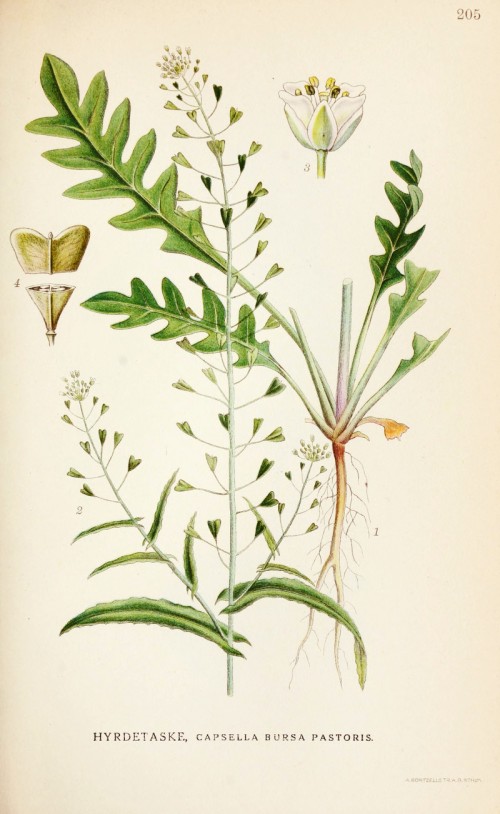Dies ist eine alte Version des Dokuments!
Capsella bursa-pastoris (L.) Medik. - syn. Thlaspi bursa-pastoris L. - Brassicaceae
shepherd's purse, (Gemeines) Hirtentäschel
Annual or biennial herb, up to 50cm tall; basal leaves rosulate, oblong or oblanceolate, lyrate, dentate, repand, or entire, cauline leaves sessile, sagittate, amplexicaul,narrowly oblong, lanceolate, or linear; fruiting pedicels slender, glabrous, sepals green or reddish, petals white, rarely pinkish or yellowish; fruit flat, base cuneate, apex emarginate or truncate; seeds brown.
„This species is used as a vegetable and in the treatment of eye diseases and dysentery. It is the second most common weed on Earth.“
http://www.efloras.org/florataxon.aspx?flora_id=2&taxon_id=200009292
„The herb [whole herb, Bursae pastoris herba] is traditionally used to stop bleeding and to treat heavy periods (menorrhagia), diarrhoea and cystitis. In chinese medicine it is used for unspecified eye diseases and dysentery… Despite animal studies showing anti-inflammatory , anti-ulcer, diuretic, hypotensive and other effects, the traditional uses of sheperd's burse are not well explained. It is thought that a peptide with oxytocin-like activity is responsible for the antihaemorrhagic action.“
[Medicinal Plants of the World. Ben-Erik Van Wyk and Michael Wink, Pretoria 2004, 78]

Lindman, C.A.M., Bilder ur Nordens Flora, vol.1, t.205 (1922-1926)
http://plantgenera.org/species.php?id_species=192281
